After 21 months, some 30,000 articles and a difficult to guess number of tens of millions of readers, something more like we had originally intended is finally here. Why did it take so long? Well, if it isn't broken, you don't need to fix it and clearly people have come here for quality writing. Appearance is secondary to our sort of audience.
But at some level you want the appearance and 'ease of use' to reflect the same quality the writing has. Scientific Blogging, Science 2.0 v1, could do everything, you just had to know how to find it. And it wasn't pretty.
So what's new besides the look? Well, nothing really, but a lot of you may feel it is new because you didn't know how to find it before. Version 1.0 started as a core feature set - basically writing and reading - and a lot of other things got added in later but there was no way to really incorporate them. With version 2.0 we were able to look at the entire feature set we wanted and incorporate it into the design itself. Some people may feel like there is less content on the front page, for example, because the big teasers and pictures are not staring at you but in actuality we have gone from 15 articles on the front page to 35. Plus blogs. Those are in the name of the site, and a lot of fun, so they deserve more attention.
Each of the categories and sub-categories likewise has a lot more content available 'at a glance' than there ever was before without having a page that had endless scrolling. Here's a quick rundown on how the header and footer looks 'new':
Header:
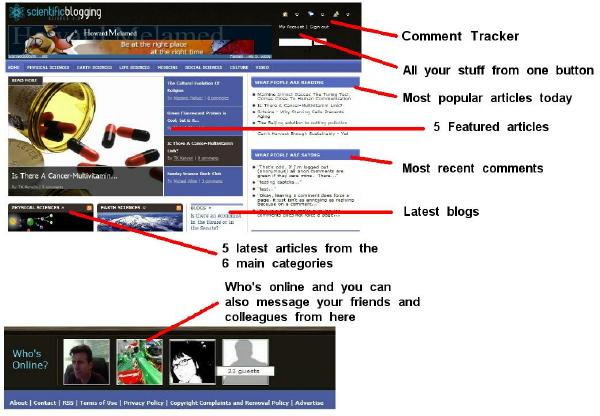
All those things were available before, you just couldn't find them. So now you have a comment tracker in the upper right, so you never have to hunt around looking for replies to comments of yours or get a dozen emails a day - you can come to the site, look at the comment tracker and deal with them all at once.
The avatars at the bottom tell you who is online and your friends have a lovely glow around their picture. If you are mutual friends, you can send messages to each other. Strangers still have to contact you through your profile page.
To know everything that is happening in one spot, we have version 1 of our dashboard. It is still being enhanced so it will change a bit this week but it's basically one location to do everything you might want to do; customize your column, write great stuff or see what your fellow science writers have done.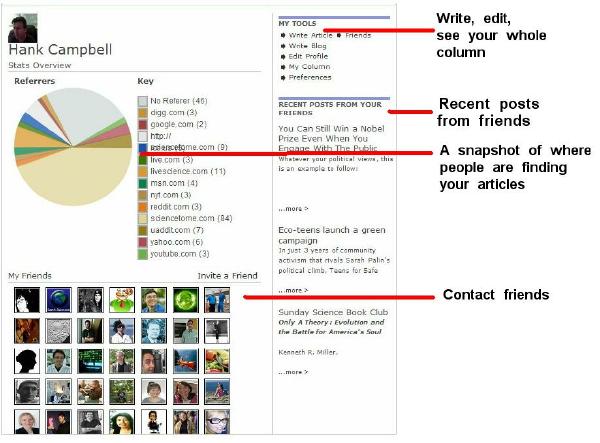
Article creation is a little different also.
We are hoping we came up with a text editor that has the features and the ease-of-use that you want. Nothing beats plain text and doing things in HTML (and that is still available right below text entry) for flexibility but for most people who like these features, it will be terrific. We also have a new way to add pictures to articles - Flickr search.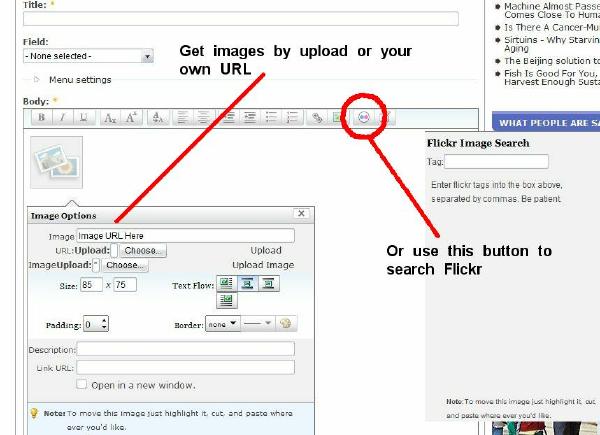
Is it finished? Well, no, as you can see there's still work to do but even that is part of the plan. For everything else, just like the reason we started this, we want community involvement.
So let us know what you think. If you find a bug, be as specific as possible and tell us about it. We did what we could in testing but there's nothing like 25,000 people a day to show you what you missed in QA.
Before I sign off, I want to talk about the people who really did the bulk of the work in making this happen. In version 1 it was really just me and I got Sefanja to come in at the end and do some things I could not do. Since you're here, it obviously went okay. Our brand of "just science, no ideology, no political agendas" science hadn't been done with user-generated content; scientists and science writers speaking directly to the public. And it really hit home.
We went from being non-existent less than two years ago to being in the top 25 science sites worldwide - and the largest independent science community. That brought us attention and we have been lucky enough to find a group of people who pitched in and helped and did a terrific job.
So let me introduce you to everyone:
Me, of course, the creator, architect, designer, part programmer and somewhat editor of Science 2.0. I had some work-for-hire help with some cosmetic stuff but since this was a project for love and not money, not much money got spent.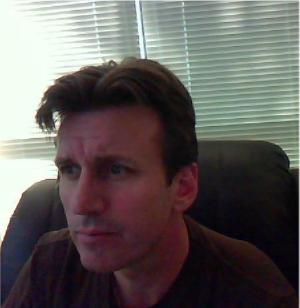
Yes, I look confused. You try and take a picture on a laptop without having it right up your nose. For v2 I did the concept and the architecture but most of the real work was done by these three guys:
Sefanja (left) and Erik
They're lumped in together because I don't have a picture of them separately. Sefanja has been here since the launch of v1, so he handled the complicated stuff about our engine. He's fixed every bug you can imagine and he created a number of the core features here. He's kind of a Jedi Master but he doesn't think so. We found Erik in July and he did things like that nifty featured block and much of the the dashboard you will come to know and love.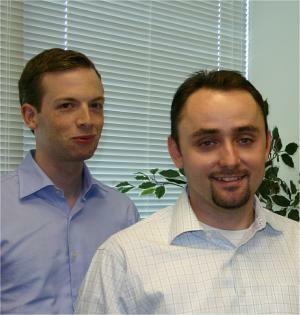
Phrase I heard most often from Erik - "5 minutes", no matter what I requested. Even when we were three weeks late finishing this. That takes a special sort of confidence.
Phrase I heard (well, read, he lives in Europe) most often from Sefanja, usually in response to an idea I had about doing some code to help since we were three weeks late; "Right. Lets not do that."
Last, but not least, the actual 'look' of version 2 - and by that I mean the 'style', the cosmetic stuff, was done (and, really, is being done, since part of the optimizaton will be feedback from all of you) by Andrey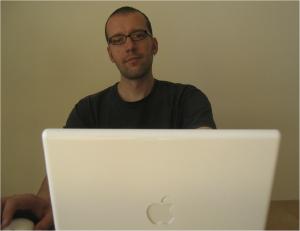
Phrase I heard most often from him, "I am not sure that will look good", usually at 1 AM when I suggested a new color scheme of some kind. He was also quite good at interpreting my elaborate, detailed instructions, which were something like, "I don't know, make it look good." Not just anyone can speak fluent Hank right away.
So there you go. The Science 2.0 family members who brought this to life. It's still a work in progress so have a little patience. There will be bugs and there will be parts that look like someone's homework rather than the interface of a science community, but those are things we have left alone because we don't want to tell you what this should look and feel like, we want you to tell us.
Happy Writing!
P.S. If you do find a problem you can send us an email at the contact button in the footer, or by clicking the link, or by leaving a comment.





Comments